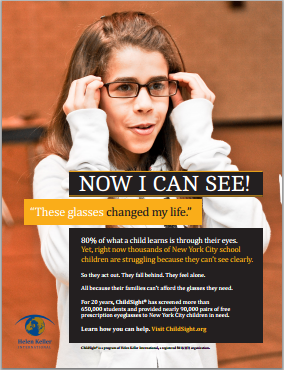Could Your Child Need Glasses?
5 Steps to Clear Vision for Your Child
As seen in the New York Daily News:
Did you know vision impairment is the most widespread disabling condition among children in the United States?
One in four adolescents suffers from common vision problems like nearsightedness, farsightedness and astigmatism and many of them are not even aware of it.
Here are five simple ways you to make sure your child isn’t one of them.
-
Do your homework.
Did you know that common vision problems like nearsightedness, farsightedness and astigmatism typically start to occur between the ages of 10 and 15?
The most common remedy for these problems is a simple pair of prescription eyeglasses.
Have a conversation with your child’s primary care physician to learn more about your child’s eye health.
-
Touch base with your child’s teacher.
Be sure that you ask specific questions about your child’s behavior throughout the school year.
Signs that they may need glasses include:
- Problems reading out loud from textbooks or the board
- Decreased participation in class
- Falling behind on homework assignments and frequently failing tests
- Constant acting up in class
If a child has an uncorrected vision problem, they may be losing confidence in their abilities, losing interest in the material, or simply not understanding the concepts being taught.
-
Watch your child over time.
Do you notice your child doing any of the following on a regular basis?
- Squinting
- Rubbing their eyes
- Tilting their head
- Frequently losing their place or skipping lines while reading
- Finger pointing while reading
- Sitting very close to the television
- Watching TV with one hand over their eye
- Rubbing their eyes
If you answered yes to any of the above, it’s time to take your child to the eye doctor for an exam.
-
Make glasses cool.
Your child may be upset to learn that he or she needs glasses.
Remind your child that there is nothing wrong with wearing glasses by pointing out people they look up to who wear them too.
Make the process of getting glasses fun by letting them choose their own frames. Remember, if your child does not like their glasses, the glasses will stay in their case.
-
Take your child for an eye exam once a year.
Even if your child already has glasses, an annual eye exam is still necessary to ensure that their prescription is correct.
And even if your child hasn’t needed glasses before, it does not mean they won’t need them now or in the future.
Nancy Prail is the Director for Helen Keller International’s ChildSight program.


